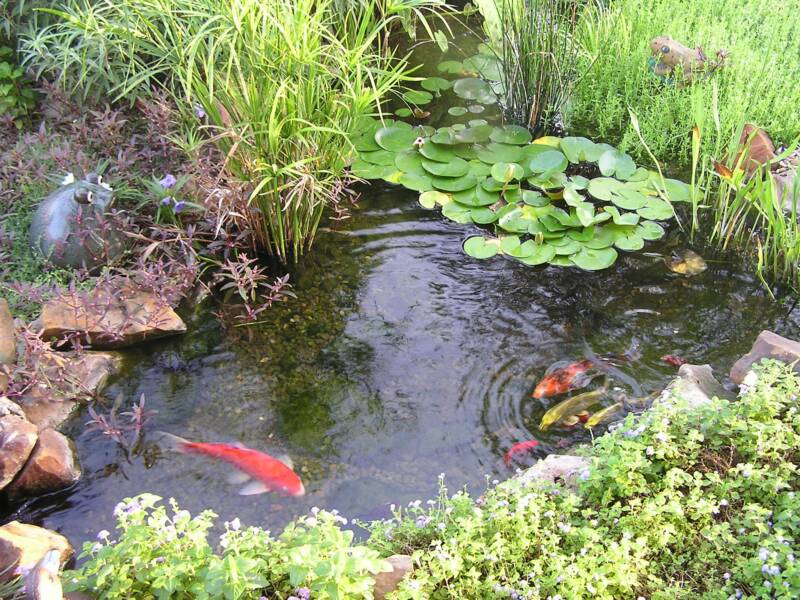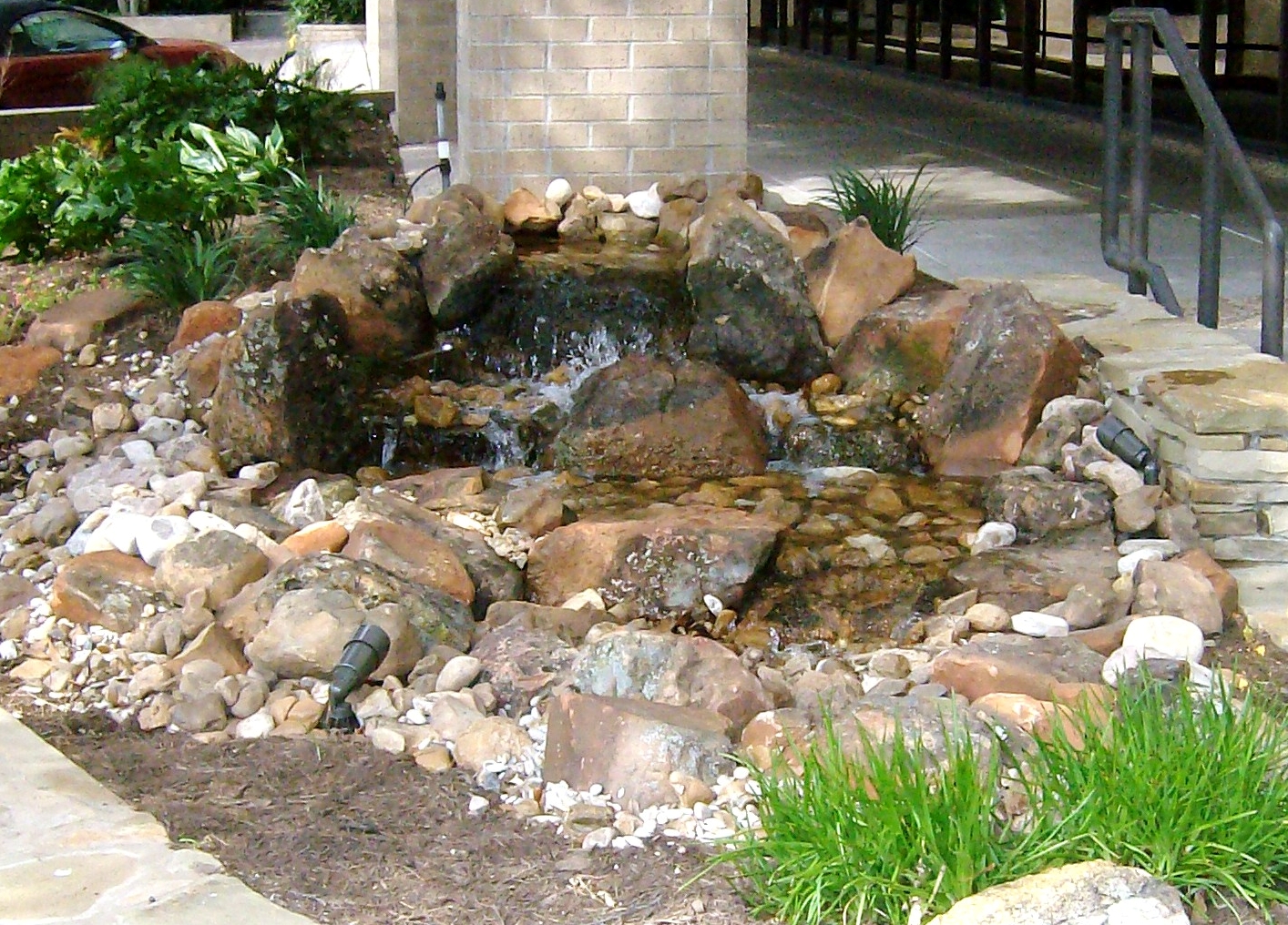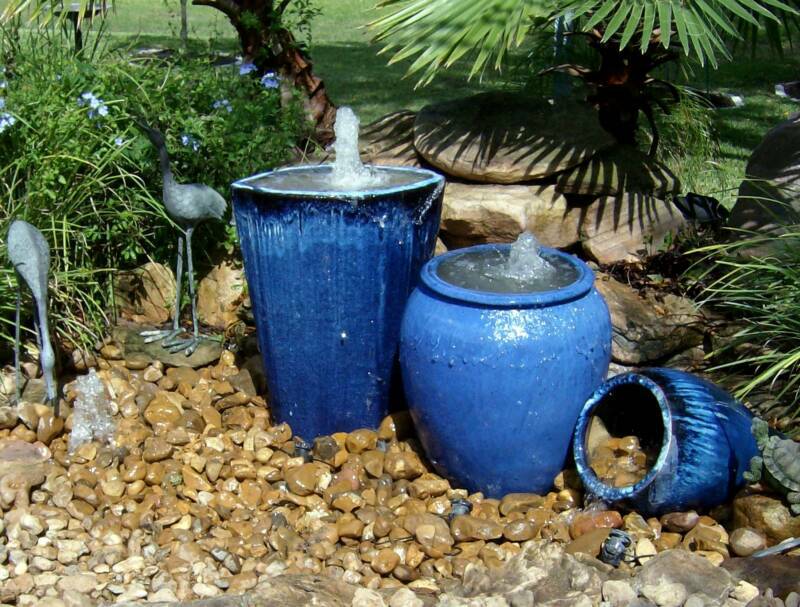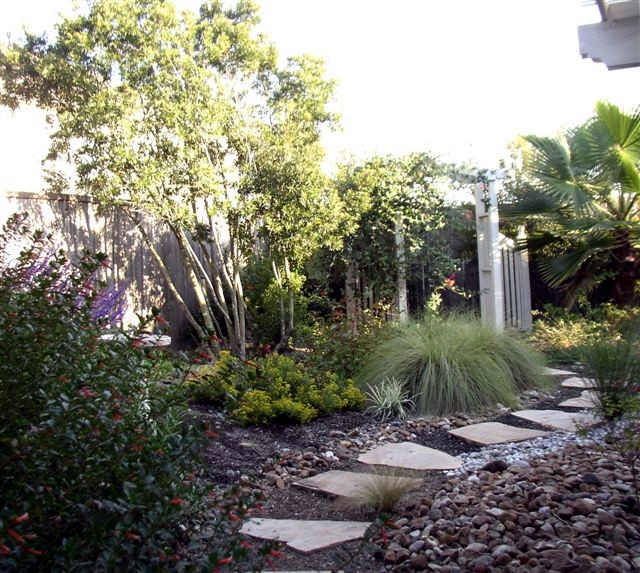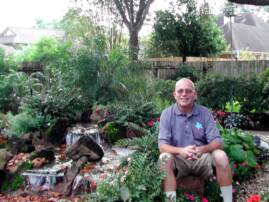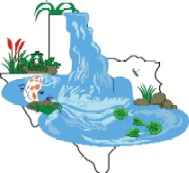


Rainwater Harvesting
Organic Ecosystem Ponds
Pondless Waterfalls
Urn and Fountain Features
Water-Wise Landscapes
Meet Your Water Feature Professionals


Texas Ponds and
Water Features
Ponds for Kids
(part one)
by Matt Boring
'The Natural Water Gardener'
I'm sorry to have missed getting an article to you last month. I had a couple of rush jobs that kept my writing time at a minimum during that period and I'm so excited about them that I want to share the story with you. It's a story of reconnecting kids with the natural world around them and to me that means it's a story about hope for the future.
Most of you know that I design and build natural, organic, ecosystem-based Koi pods or 'water gardens' in both residential and commercial settings. I get most of my inquiries through my website, TexasPonds.com. But many times other landscape companies or landscape architects who don't specialize in constructing water features, but want the best results for their clients, will call me or refer their customer to me for that portion of their landscape package. Currently CenTex Landscapes in Austin and I are working together to convert some old concrete ponds that were built in the sixties with no filtration systems into workable and easily-maintained fountains. I am also proud to work with companies that are totally organic and stress using native plants to minimize their water needs, such as Esperanza Landscapes in Leander.
A few months ago, I was approached by JSB and Associates in Missouri City. These guys have done some really impressive work in the past and can work on a really massive scale when they have to, such as when one of these new mega-churches is being built. They've done large-scale work for the City of Houston as well as for the school district and I was intrigued that they were interested in me. I've always wanted to take what I can do to a larger audience. After putting in a small pond on the company owner's property as part of a set of three 'demo gardens', which are the yards of three adjacent custom homes, I was asked to visit Cornelius Elementary School to look at a problem pond they'd had since the seventies.
This pond consisted of those black plastic tubs that you can buy at the hardware store gardening department with stones piled up and concreted together and water piped up to the top to create the waterfall. There was no thought of filtration at all. This was inside an educational courtyard where the children grow their own vegetables and do experiments to study nature and her processes. The kids were supposed to be able to take water samples so that they could study the aquatic world. But without filtration, the real process they observed was the pond water turning green and staying green. Of course, observing the millions of single-celled suspended algae under the microscope would probably look pretty cool, but they may as well have been studying what happens to a swimming pool that you stop adding chlorine to. (It turns green.)
The lower of the two plastic tubs had been leaking for a while and had frustrated two other companies' attempts to repair it. Let's just say my solution involved a jackhammer and a completely new pond system. JSB and Associates agreed to pay for the repair and within a week or so, we had this thing re-built. Although we were a bit limited by having to build the new pond in the shell of the old one, it still came out great, with a waterfall feeding the upper pond, then another waterfall spilling over into the lower pond. It also looks a lot more natural since you can't see any filters or liner or plastic.
As we began work on the second demo pond at JSB's property, an administrator for another school made an appointment to come out and see us. When she walked in the door, she was so excited that she didn't even introduce herself. She just said, “I've seen the pond at Cornelius and I want a pond. I want a pond. I want a pond.” She was really speaking my language! She worked at Landtrip Elementary in Houston, which was undergoing massive renovations and upgrades, including an environmental educational garden. We gave her the tour, showing her the small pond and the excavation for the larger one and invited her back to see the larger one when it was finished. Evidently she liked what she saw and we got the contract to do that project as well. The only problem: the job was approved on Friday afternoon and had to be finished by Tuesday evening since the mayor was coming to the dedication on Wednesday morning. And it was supposed to rain Monday. Whew!!
I called up my supplier for pond components, Whiz-Q Stone in Ft. Worth. They had my shipment ready and on a truck by the end of the day heading my way. I picked out the stone I would use at Alamo Stone and was ready to go. On Saturday, we went to excavate the pond. I didn't want to have to do it after the rain since it would be muddy and sloppy and would slow us down. I had an extra BIOFALLS filter so we installed that and got to work digging. I had an extra piece of liner that we put in to keep the excavation dry in the coming storms.
Monday came and brought with it the first good cold front of the season, dropping the temperatures by twenty degrees or more within a couple of hours. It also brought rain, cold rain, for most of the day. Fortunately it also brought my stone delivery and my pond components from Ft. Worth. When Tuesday came, Armando and I went to work rocking in the pond, installing the skimmer, and building the waterfall. The best part is that we were able to finish by the end of the day and the pond looked great. The kids had been watching us work all day until they had to go home. When they came back to school on Wednesday morning, it was full of water and the waterfall was running. They actually came outside with the “I want a pond” lady and gave us a round of applause and a bunch of thumbs-ups! It sure brought a smile to my face and writing about it now almost puts a tear in my eye.
The best part is that I will be going up to these schools periodically to teach the kids about the ecosystem. They will be able to observe and do hands-on testing of a natural ecosystem, watching the food chain spring up where the pond was installed. From single-celled microscopic life to the multi-celled creatures, to dragonfly nymphs and other aquatic insects, to fish, frogs, and turtles that feed on the insects, they can really study nature in action. The pond will also draw in butterflies and birds will come to drink and bathe there, splashing around like happy children in a warm spring rain.
It's very important for the next generation to learn about the natural world that surrounds us and to understand that we as humans have a direct impact on the health of the planet that sustains us all. Some humans have a positive impact, but unfortunately, the majority do not. The younger we can reach the future leaders with a positive message, the more of a positive difference we can make on changing behaviors, patterns, and ways of doing things that may have been set in motion long before we were aware of their impact on the planet that is the basis for our lives.

